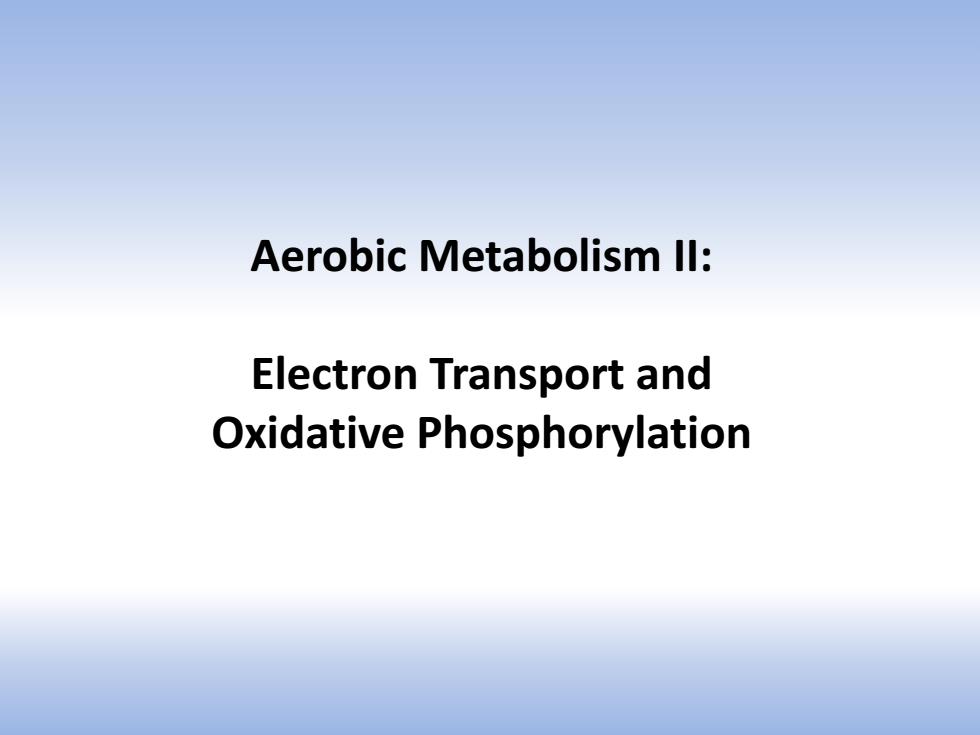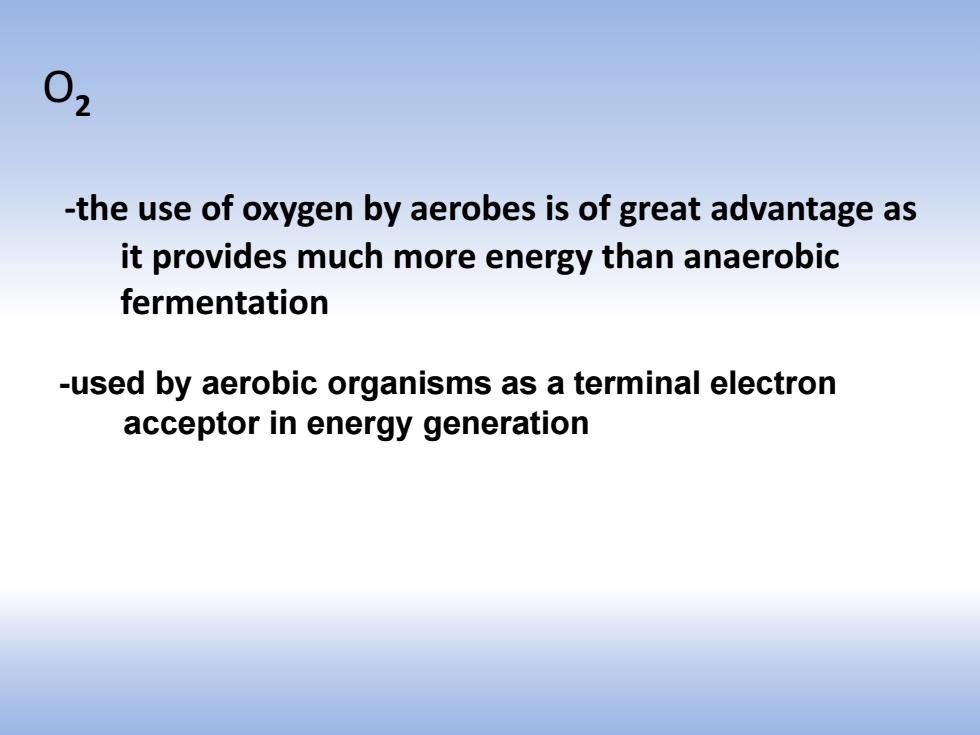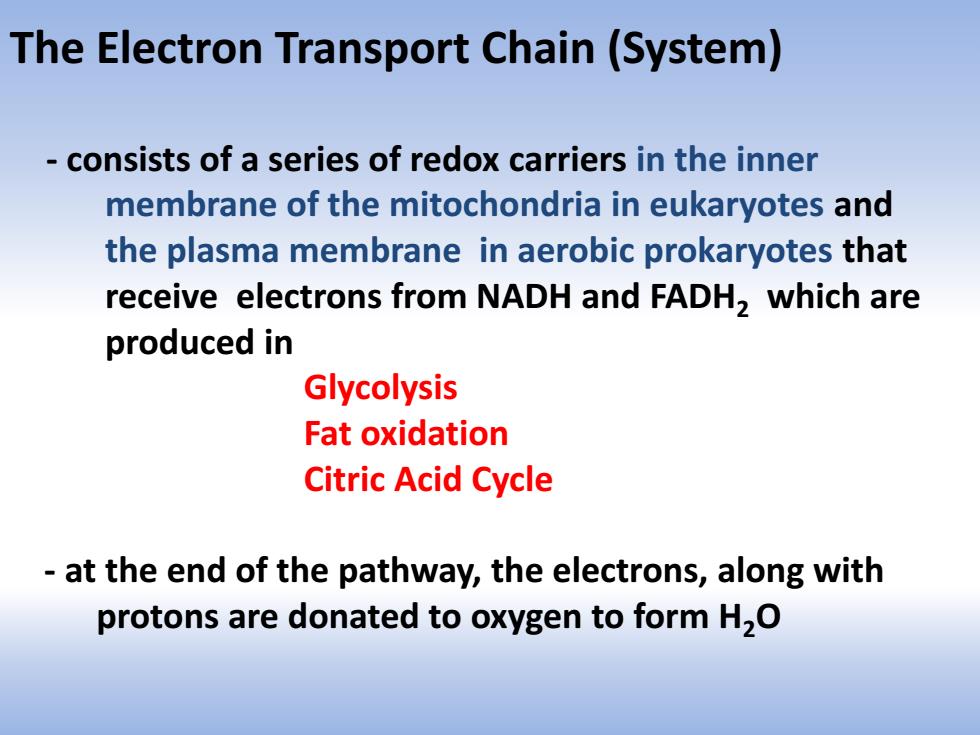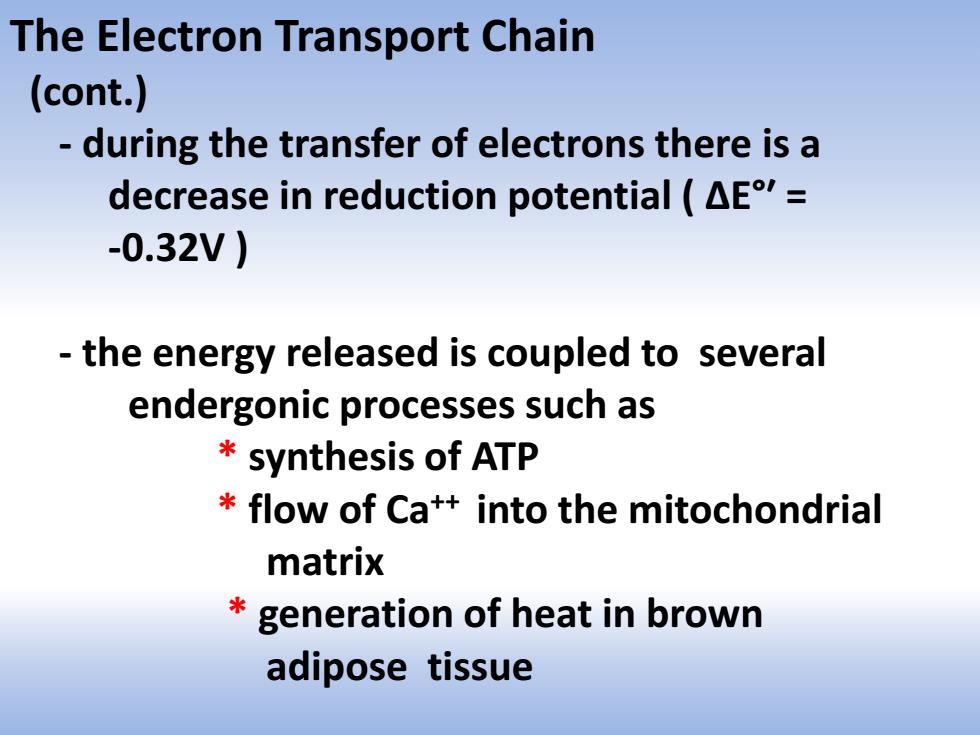
Aerobic Metabolism Il: Electron Transport and Oxidative Phosphorylation
Aerobic Metabolism II: Electron Transport and Oxidative Phosphorylation

-the use of oxygen by aerobes is of great advantage as it provides much more energy than anaerobic fermentation -used by aerobic organisms as a terminal electron acceptor in energy generation
O2 -the use of oxygen by aerobes is of great advantage as it provides much more energy than anaerobic fermentation -used by aerobic organisms as a terminal electron acceptor in energy generation

O2 (cont.) it is suitable for this role because: it is readily available (occurs almost everywhere on the earth) it diffuses easily across cell membranes it is highly reactive and thus readily accepts electrons the use of O,by aerobic organisms is linked to the production of highly destructive ROS (reactive oxygen species)such as:hydrogen peroxide, superoxide radical,hydroxy radical,and singlet oxygen
- it is suitable for this role because: * it is readily available (occurs almost everywhere on the earth) * it diffuses easily across cell membranes * it is highly reactive and thus readily accepts electrons - the use of O2 by aerobic organisms is linked to the production of highly destructive ROS (reactive oxygen species) such as: hydrogen peroxide, superoxide radical, hydroxy radical, and singlet oxygen O2 (cont.)

The Electron Transport Chain(System) consists of a series of redox carriers in the inner membrane of the mitochondria in eukaryotes and the plasma membrane in aerobic prokaryotes that receive electrons from NADH and FADH,which are produced in Glycolysis Fat oxidation Citric Acid Cycle at the end of the pathway,the electrons,along with protons are donated to oxygen to form H,O
The Electron Transport Chain (System) - consists of a series of redox carriers in the inner membrane of the mitochondria in eukaryotes and the plasma membrane in aerobic prokaryotes that receive electrons from NADH and FADH2 which are produced in Glycolysis Fat oxidation Citric Acid Cycle - at the end of the pathway, the electrons, along with protons are donated to oxygen to form H2O

The Electron Transport Chain (cont.) during the transfer of electrons there is a decrease in reduction potential (AE= -0.32V) the energy released is coupled to several endergonic processes such as synthesis of ATP flow of Ca++into the mitochondrial matrix generation of heat in brown adipose tissue
The Electron Transport Chain (cont.) - during the transfer of electrons there is a decrease in reduction potential ( ΔE°ʹ = -0.32V ) - the energy released is coupled to several endergonic processes such as * synthesis of ATP * flow of Ca++ into the mitochondrial matrix * generation of heat in brown adipose tissue